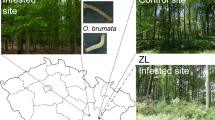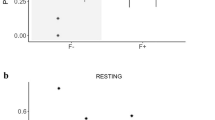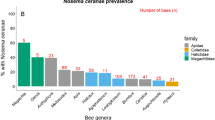Abstract
PRIMATE polyspecific associations are likely to be an effective means of reducing the number of fly bites individual monkeys receive1. The probability of acquiring a vector-borne disease, and the severity of that disease increases with the number of fly bites an animal receives2–4. Bait animals placed in groups are known to attract fewer individual mosquitoes per bait individual than are bait animals placed singly3,5. Mean group size of the mangabey, Cercocebus albigena is about 13 in Kibale Forest, Uganda, and the mean group size of Colobus badius and Cercopithecus ascanius are 50 and 35 respectively6. Associations of groups of these species are likely to reduce significantly the number of dipteran bites individual monkeys receive1,7. Other explanations proposed for primate polyspecific associations include increased food location abilities, and increased predator detection and avoidance8,9. I report here the correlation of the temporal occurrence of C. albigena polyspecific associations with the activity of biting and sucking flies, C. albigena feeding and other activities, and the temporal occurrence of attacks by the crowned eagle-hawk (Stephanoaetus coronatus) (eagles are the only known predator of these monkeys). The study was carried out in the Kibale Forest, Ngogo Reserve.
This is a preview of subscription content, access via your institution
Access options
Subscribe to this journal
Receive 51 print issues and online access
$199.00 per year
only $3.90 per issue
Buy this article
- Purchase on Springer Link
- Instant access to full article PDF
Prices may be subject to local taxes which are calculated during checkout
Similar content being viewed by others
References
Freeland, W. J. Biotropica 8, 12–24 (1976).
Willett, K. C. Ann. trop. Med Parasitol. 50, 75–80 (1956).
Reid, J. A. Bull. ent. Res. 52, 43–62 (1961).
Hewitt, R. Bird malaria (John Hopkins, Baltimore, 1940).
Haddow, J. A. Bull. ent. Res. 33, 91–142 (1942).
Struhsaker, T. T. (in the press).
Hamilton, W. D. J theor. Biol. 31, 295–311 (1971).
Struhsaker, T. T. The Red Colobus Monkey (University of Chicago Press, Chicago. 1975).
Gartlan, J. S. & Struhsaker, T. T. J. zool. Soc. Lond. 168, 221–266 (1972).
Haddow, A. J., Gillett, J. D. & Highton, R. B. Bull. ent. Res. 37, 301–320 (1947).
Gautier, J. P. & Gautier-Hion, A. La Terre et la Vie 116, 164–201 (19xx).
Haddow, A. J. Proc. zool. Soc. Lond. 122, 297–394 (1952).
Author information
Authors and Affiliations
Rights and permissions
About this article
Cite this article
FREELAND, W. Blood-sucking flies and primate polyspecific associations. Nature 269, 801–802 (1977). https://doi.org/10.1038/269801a0
Received:
Accepted:
Issue Date:
DOI: https://doi.org/10.1038/269801a0
This article is cited by
-
Multiple Ecological Factors Influence the Location of Proboscis Monkey (Nasalis larvatus) Sleeping Sites in West Kalimantan, Indonesia
International Journal of Primatology (2017)
-
Do chimpanzees (Pan troglodytes schweinfurthii) exhibit sleep related behaviors that minimize exposure to parasitic arthropods? A preliminary report on the possible anti-vector function of chimpanzee sleeping platforms
Primates (2013)
-
Malaria infection and host behavior: a comparative study of Neotropical primates
Behavioral Ecology and Sociobiology (2005)
-
Juvenile three-spined sticklebacks avoid parasitized conspecifics
Environmental Biology of Fishes (1994)
-
Ectoparasitism as a possible cost of social life: a comparative analysis using Australian passerines (Passeriformes)
Oecologia (1992)
Comments
By submitting a comment you agree to abide by our Terms and Community Guidelines. If you find something abusive or that does not comply with our terms or guidelines please flag it as inappropriate.



